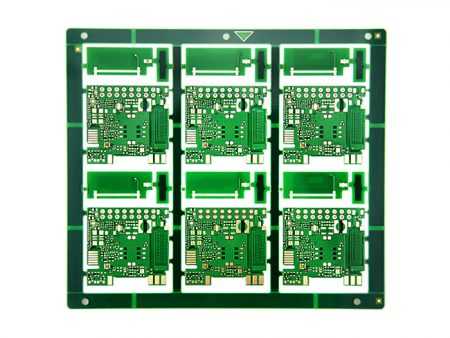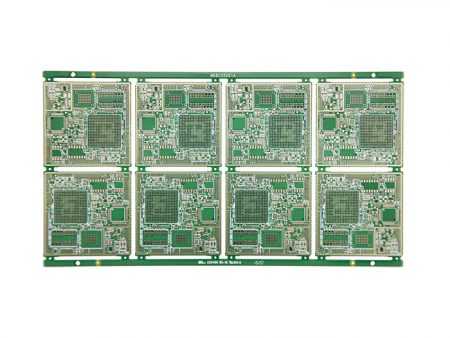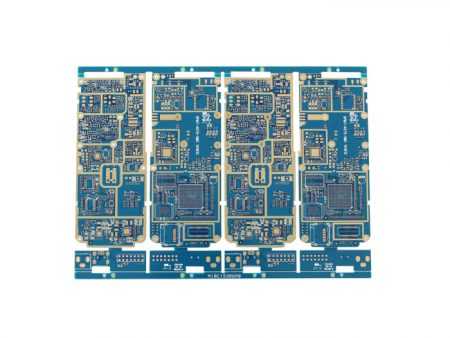- +86-755-23012705
- Building 3, Jinfeng Industrial Park, Fuyong Street, Baoan District, Shenzhen ,China
- [email protected]
High-density interconnect (HDI) printed circuit boards (PCBs) have become increasingly important in a wide range of applications due to their increased complexity and capabilities. However, manufacturing HDI PCBs presents several challenges that must be overcome to achieve high-quality and reliable products. This document explores some of the key difficulties encountered during HDI PCB manufacturing.
HDI PCBs find applications in various industries where miniaturization, electrical performance, and manufacturing flexibility are key components. Some common applications of HDI PCBs include:
– Computers and Mobile Devices: HDI PCBs are widely used in laptops, smartphones, and other handheld devices due to their small size and improved electrical performance.
– Communication Systems: HDI PCBs are utilized in communication systems, such as wireless base stations and satellite systems, due to their ability to handle high data rates and transmit signals over long distances.
– Medical Devices: HDI PCBs are used in medical devices, such as pacemakers and ultrasound machines, due to their high reliability and suitability for sensitive electronic circuits.
– Automotive: HDI PCBs are found in automotive applications, such as navigation systems and infotainment systems, due to their ability to handle high signal frequencies and withstand harsh environmental conditions.

The design of HDI PCBs requires careful consideration of various factors such as signal integrity, power distribution, and thermal management. These complexities arise due to the small conductor sizes and tight spacing required to achieve high component densities. Designing the board layout while minimizing signal interference and ensuring proper power distribution can be time-consuming and labor-intensive.
Manufacturing HDI PCBs requires high precision and accuracy throughout the entire production process. The smallest misalignments or imperfections can lead to significant performance and reliability issues. From the initial design to fabrication of the board, tight tolerances must be maintained to ensure consistent and reliable performance.
HDI PCBs involve multiple complex manufacturing processes, including microvia formation, copper plating, and via filling. These processes require specialized equipment and expertise, which adds to the overall cost of manufacturing. Additionally, the alignment and registration of layers within HDI PCBs can be particularly challenging due to the complexity of the design.

The intricate nature of HDI PCBs increases the likelihood of defects during manufacturing. Defects such as via bridging, cracked vias, and shorts between closely spaced traces can have severe consequences, such as functional failures or electrical shorts. Manufacturing defects can be particularly challenging to detect and rectify, increasing the risk of costly rework or defective products.
HDI PCBs rely heavily on micro-vias, eliminating the need for through-hole components. This limitation can make it challenging to accommodate certain components or connectors that may require through-hole mounting. Designers may need to carefully consider component selection and design alternatives to accommodate the limited through-hole capabilities.
The complexity of HDI PCBs intensifies the need for stringent quality control and inspection throughout the manufacturing process. With multiple layers, intricate routing, and tight tolerances, even small defects or errors can have significant consequences. Implementing effective quality control measures, such as visual inspection, AOI (Automated Optical Inspection), and X-ray inspection, is essential to detect and prevent manufacturing defects.

In conclusion, manufacturing HDI PCBs presents numerous difficulties and challenges due to the increased design complexities, high precision requirements, complex manufacturing processes, increased risk of defects, limited through-hole component usage, and the need for stringent quality control. By addressing these challenges and investing in advanced manufacturing technologies and processes, manufacturers can overcome these difficulties and produce high-quality HDI PCBs that meet the needs of various industries.
HDI PCBs offer significant advantages over traditional PCBs in terms of their reduced size, enhanced electrical performance, cost savings, and increased manufacturing flexibility. They are widely used in various fields, including computers, communication systems, medical devices, and automotive applications. As the demand for miniaturization and performance improvement continues to grow, HDI PCBs will continue to play a vital role in the electronics industry.
Make Your PCB Dreams a Reality with XPCB Limited
XPCB Limited is your go-to partner for turning your PCB dreams into reality. Our streamlined PCB manufacturing process, combined with quick-turnaround prototyping and turnkey PCBA services, ensures that your projects come to life with ease. Trust in our expertise and dedication to quality as we help you achieve your PCB goals. Join us and experience the difference with XPCB Limited.






XPCB Limited is a premium PCB & PCBA manufacturer based in China.
We specialize in multilayer flexible circuits, rigid-flex PCB, HDI PCB, and Rogers PCB.
Quick-turn PCB prototyping is our specialty. Demanding project is our advantage.
Tel : +86-136-3163-3671
Fax : +86-755-2301 2705
Email : [email protected]
© 2024 - XPCB Limited All Right Reserve
